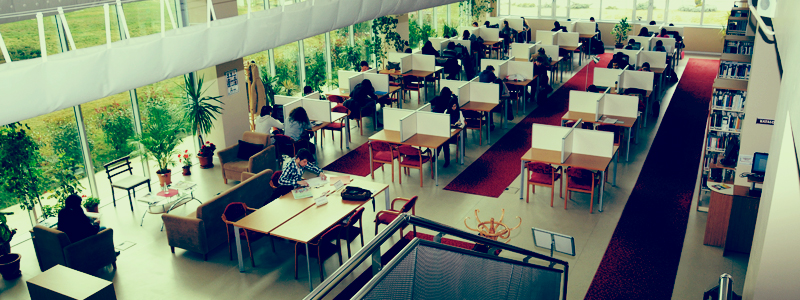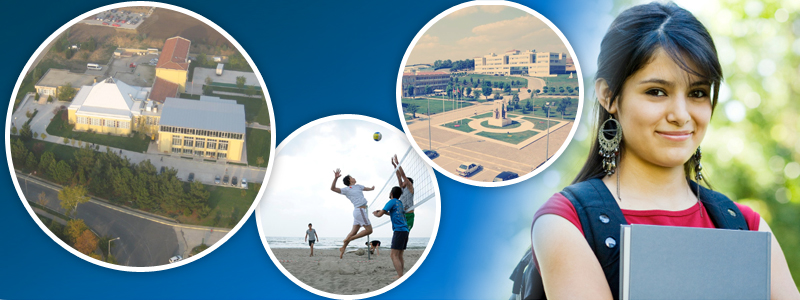| Exams, Assessment and Grading | Exams are graded out of 100. The semester / year-end grade of a course is the sum of 30% of the arithmetic average of the midterm or midterm exams and 70% of the grade taken in the semester / year-end exam or make-up exam. However, the semester / year-end grade of a course; Provided that it is decided by the relevant faculty / school board and announced at the beginning of the semester, it can be calculated between 30% and 50% of the arithmetic average of the midterm or midterm exams, between 70% and 50% of the grade taken in the semester / year-end or make-up exam, and the sum of the ratios can be calculated as 100%. As a result of the calculation, if the first number after the decimal point is less than five, it is increased to the lower integer, and if it is five or more than five, it is increased to the upper integer and finalized.
Course evaluations are submitted to Student Affairs by the course instructor. Evaluation grades (midterm, homework, project, final, make-up grades) are published and announced in the student information system.
Grades
The grading system to evaluate the student performance is signified by the values in the chart below. For each course students are graded by letters. Letter grades, coefficients and ratios are as follows:
|
Grade
|
Letter Grade
|
Coefficient
|
Status
|
|
90-100
|
AA
|
4.00
|
Pass
|
|
80-89
|
BA
|
3.50
|
Pass
|
|
70-79
|
BB
|
3.00
|
Pass
|
|
65-69
|
CB
|
2.50
|
Pass
|
|
60-64
|
CC
|
2.00
|
Pass
|
|
50-59
|
DD
|
1.50
|
Fail
|
|
30-49
|
FD
|
1.00
|
Fail
|
|
0-29
|
FF
|
0.00
|
Fail
|
Students are required to retake the courses from which they received DD, FD or FF during the first oncoming semester in which these courses are offered.
Successful Students
Students who complete their associate or undergraduate degree with a grade point average of 3.00 – 3.49 graduate as honor students; 3.50 and above as high honor students. |
| Teaching Methods | Teaching methods are determined so as to improve skills, such as teaching-learning strategies, self-discipline, life-long learning, observation, sharing knowledge, presentation, critical thinking, teamwork, effective use of informatics.
Moreover, the choice of teaching methods pays heed to supporting students with different skills. The teaching methods used in the program are listed below*:
|
TEACHING METHODS*
|
LEARNING ACTIVITIES
|
MEANS
|
|
Course
|
Listening and interpretation
|
Standard classroom technologies, multimedia devices, projector, computer, overhead projector
|
|
Discussion Course
|
Listening and interpretation, observation/situation handling, critical thinking, question development
|
Standard classroom technologies, multimedia devices, projector, computer, overhead projector
|
|
Special Support / Structural Examples
|
Special skills planned beforehand
|
|
|
Playing a Role / Drama
|
Special skills planned beforehand
|
Standard classroom technologies, special equipment
|
|
Problem Solving
|
Special skills planned beforehand
|
|
|
Case Study
|
Special skills planned beforehand
|
|
|
Brainstorming
|
Listening and interpretation, observation/situation handling, critical thinking, question development, team work
|
Standard classroom technologies, multimedia devices, projector, computer, overhead projector
|
|
Small Group Discussion
|
Listening and interpretation, observation/situation handling, critical thinking, question development
|
Standard classroom technologies, multimedia devices, projector, computer, overhead projector
|
|
Presentation
|
Listening and interpretation, observation/situation handling
|
Real or virtual environment suitable for observation
|
|
Simulation
|
Listening and interpretation, observation/situation handling, informatics skills
|
Real or virtual environment suitable for observation
|
|
Seminar
|
Research – lifelong learning, writing, reading, informatics, listening and interpretation, management skills
|
Standard classroom technologies, multimedia devices, projector, computer, overhead projector, special equipment
|
|
Group Study
|
Research – lifelong learning, writing, reading, informatics, critical thinking, question development, management skills, team work
|
|
|
Field / Land Study
|
Observation / situation handling, research – lifelong learning, writing, reading
|
|
|
Laboratory
|
Observation/situation handling, informatics, management skills, team work
|
Special equipment
|
|
Homework
|
Research – lifelong learning, writing, reading, Informatics
|
Internet database, library database, e-mail
|
|
Oral Exam
|
|
|
|
Survey and Questionnaire Study
|
Research – lifelong learning, writing, reading
|
|
|
Panel
|
Listening and interpretation, observation/situation handling
|
Standard classroom technologies, multimedia devices, projector, computer, overhead projector, special equipment
|
|
Guest Speaker
|
Listening and interpretation, observation/situation handling
|
Standard classroom technologies, multimedia devices, projector, computer, overhead projector, special equipment
|
|
Student Club Activity / Projects
|
Observation/situation handling, critical thinking, question development, team work, research – lifelong learning, writing, reading, management skills, special skills planned beforehand
|
|
*One or more of the listed methods can be used depending on the specificity of the course. |









